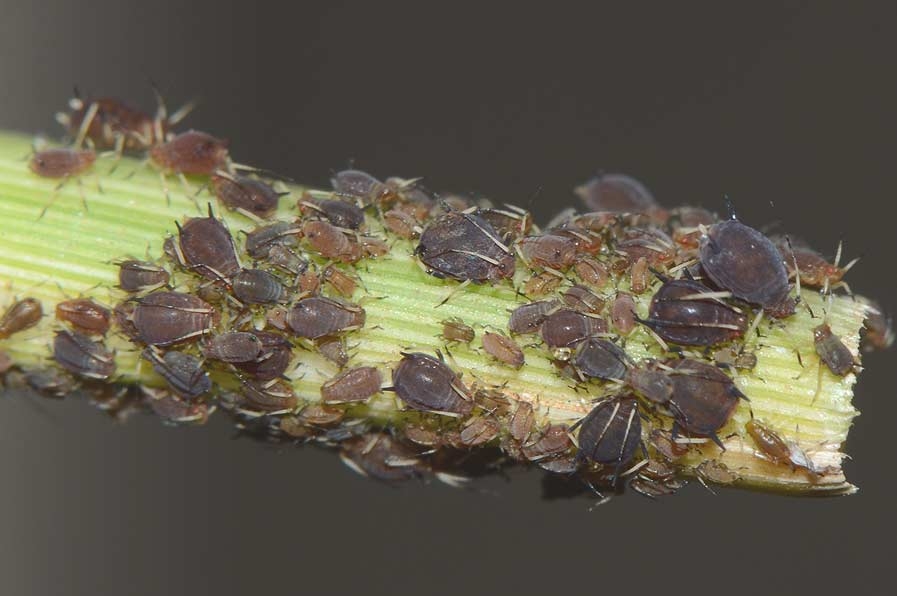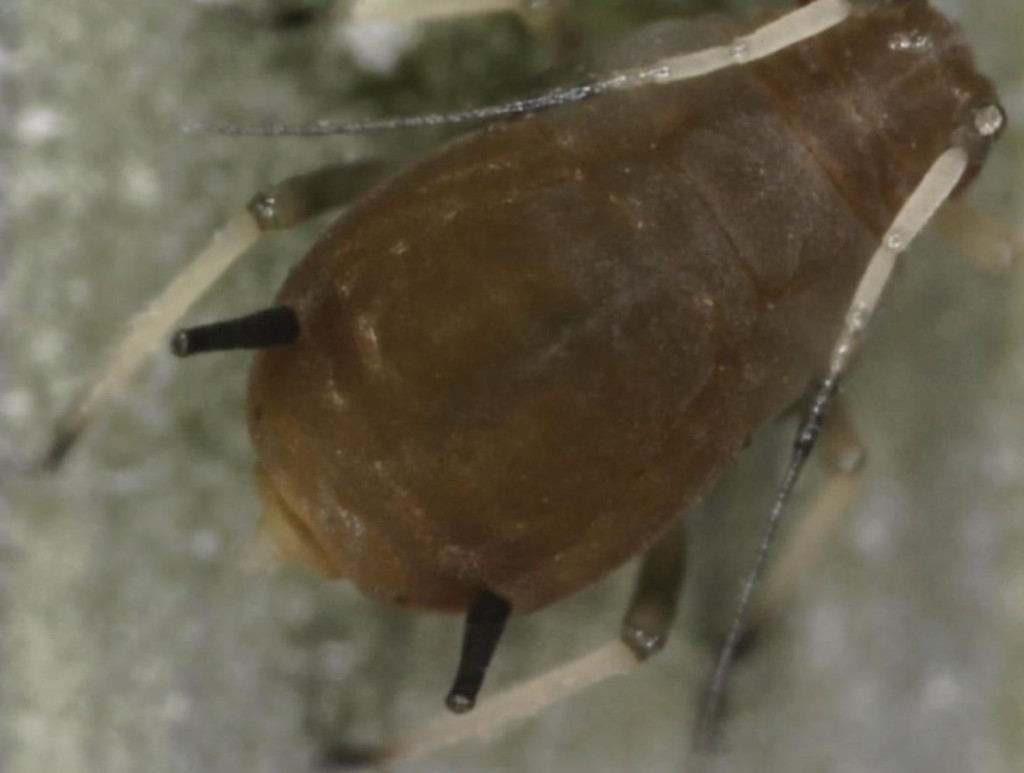Discovery of Rusty Plum Aphid, Hysteroneura setariae (Thomas), in Southwestern Kansas
As if cereal farmers didn’t have enough to worry about with the explosion of sugarcane aphid in sorghum and recent reports of the hedgehog grain aphid, Sipha maydis, New Mexico, Colorado and Missouri. Last week, samples of a reddish-brown aphid were collected from sorghum in mixed infestations of sugarcane aphid, Melanaphis sacchari, and corn leaf aphid, Rhopalosiphum maidis. Specimens were identified by Dr. Susan Halbert (Dept. of Plant Industry, Florida) as rusty plum aphid, Hysteroneura setariae (Thomas). The aphids were discovered in a dryland sorghum field just north of a grassy pasture in Stevens county.
The host range of this aphid is quite broad and includes grasses in the genera Cynodon, Eragrotis, Eleusine, Hordeum, Oryza, Panicum, Pennisetum, Saccharum, Setaria, Sorghum and Triticum. Thus, it has the potential to infest wheat, sorghum, barley, millet and sugarcane; it is a recognized pest of rice in Asia and Africa. Plants in the family Cyperaceae (sedges), cocconut seedlings, peanut and papaya have also been reported as hosts. Direct feeding damage to plants appears limited to sap removal, and it may have greater economic importance as a vector of many plant viruses including sugarcane mosaic potyvirus, cucumber mosaic, watermelon mosaic 2, papaya ringspot, and zucchini yellow mosaic.
The rusty plum aphid is capable of sexual reproduction (and thus overwintering in the egg stage) wherever trees of the genus Prunus are present, although it can also remain asexual on cereals year-round in warm climates. It has been found in North America for many years, primarily in California and Florida, and as far north as Minnesota and several northeast states, but very little is known about its biology or its potential to attain pest status the High Plains cereal crops.
The key features for identifying rusty plum aphid are the first 3 antennal segments that, along with the tibia (lower leg), are very pale, almost colorless, with the distal segments of these appendages shading to black. The cornicles (‘tailpipes’) are long and uniformly dark and the cauda (tail) is pale.
-Sarah Zukoff and J.P. Michaud

